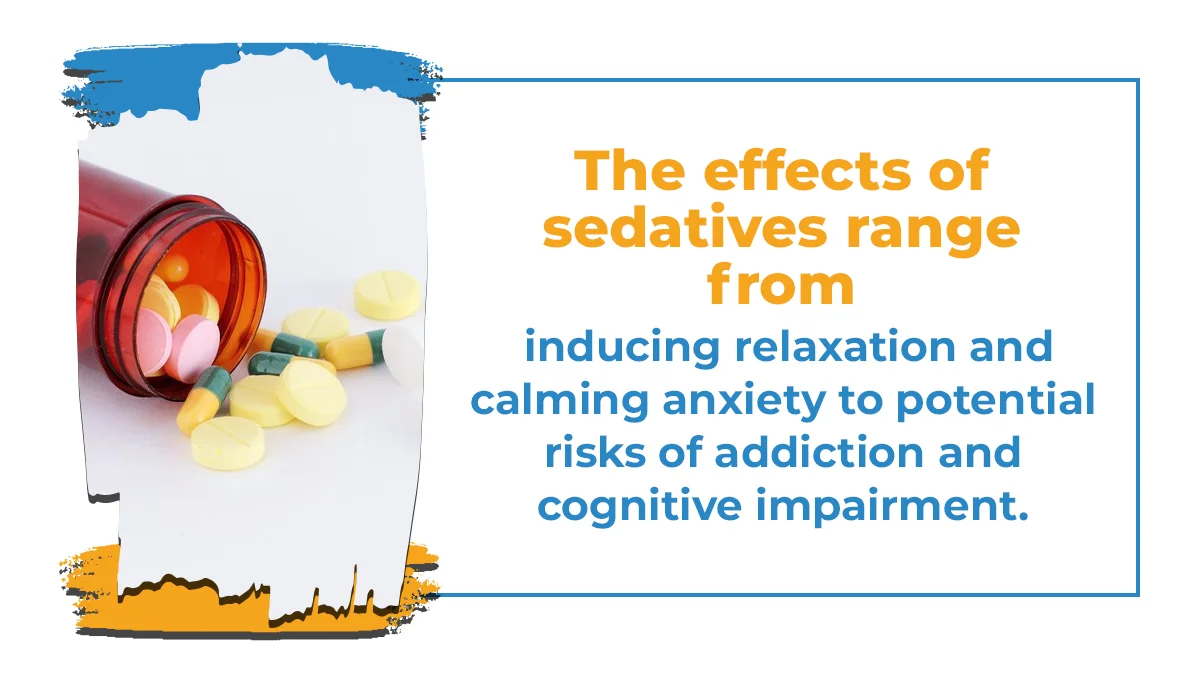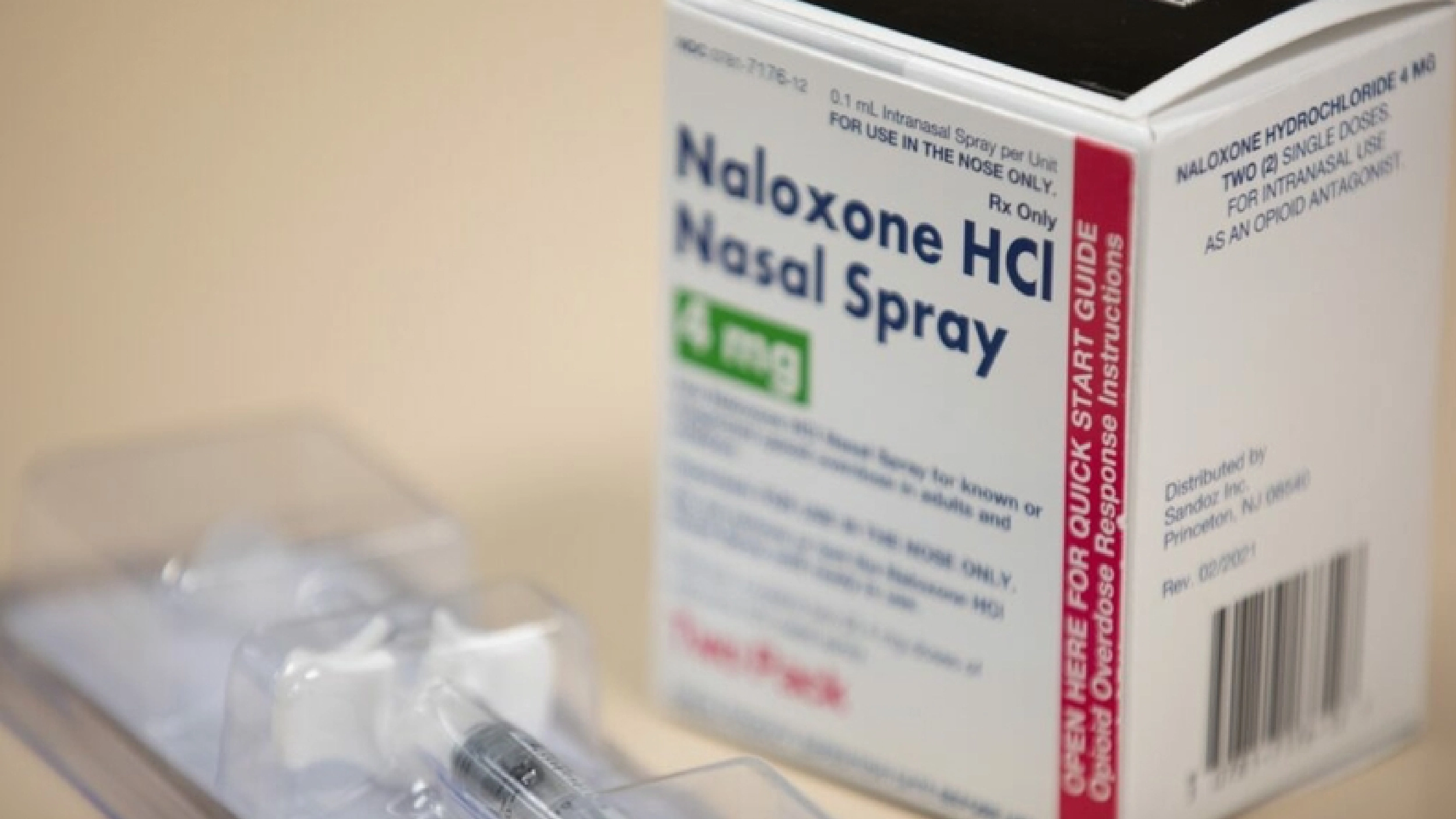
A Guide To Repairing Family Relationships
Discover expert tips for repairing family relationships and fostering healthy connections with The Recovery Team.

Sedatives, commonly known as tranquilizers or sleep aids, are medications that induce a calming or sleep-inducing effect on the central nervous system (CNS). Doctors often prescribe these drugs to alleviate anxiety, promote relaxation, or aid in sleep disorders.
The effects of sedatives come with both positive and negative consequences. In this article, we will explore the diverse effects of sedatives, shedding light on their benefits and potential risks for individuals using these medications.
Sedatives, prescription medications that calm the nervous system, aim to alleviate anxiety and induce relaxation. Here is what you need to know:
Contact The Recovery Team at (800) 817-1247 to embark on a personalized journey toward a life free from sedative-hypnotic drugs.
Sedatives are a class of medications that primarily act on the central nervous system (CNS), inducing relaxation, calmness, and sometimes sleep. They enhance the effects of a neurotransmitter called gamma-aminobutyric acid (GABA), an inhibitory neurotransmitter in the brain.
When GABA binds to its receptors, it usually slows down or inhibits the activity of neurons in the brain, reducing their excitability. Sedatives, such as benzodiazepines, barbiturates, and some sleep medications, facilitate GABA’s action, effectively increasing its inhibitory effects. This leads to a decrease in neuronal activity throughout the brain.
This decreased brain activity manifests in various ways. It can reduce anxiety by calming overactive regions responsible for stress responses. Additionally, sedatives can impair cognitive functions, motor coordination, and reaction times due to the general suppression of brain activity.
Different sedatives have varying mechanisms of action. For instance, benzodiazepines specifically enhance the binding of GABA to its receptors, while barbiturates act by directly activating the GABA receptors. Non-benzodiazepine sleep medications target specific subtypes of GABA receptors to induce sleep.
Excessive use or abuse of sedatives can lead to tolerance, dependence, and potentially dangerous withdrawal symptoms upon cessation. Moreover, the impact of sedatives on brain activity highlights the importance of cautious use, as they can cause drowsiness, impair judgment, and, in high doses, even lead to respiratory problems.
Prescription sedatives, when used appropriately under medical supervision, can have several positive effects in various clinical scenarios. Some of the positive effects include:
Sedatives like benzodiazepines are prescribed to alleviate symptoms of anxiety disorders. By calming overactive brain regions responsible for stress responses, they can offer significant relief to individuals experiencing excessive worry, panic attacks, or phobias.
Certain sedatives, such as non-benzodiazepine sleep medications or hypnotics, aid in managing insomnia. They can help regulate sleep patterns, decrease the time it takes to fall asleep and improve sleep quality for individuals struggling with sleep disorders.
Sedatives like benzodiazepines can act as muscle relaxants, helping to alleviate muscle spasms, tension, or stiffness, which can be beneficial for conditions involving muscle pain or spasticity.
In some cases, sedatives are used as anticonvulsants to manage certain types of seizures. They help in calming excessive neuronal firing that leads to seizures, providing relief for individuals with epilepsy or seizure disorders.
Sedatives are often used to induce sedation or reduce anxiety before medical procedures or surgeries. They can create a relaxed state, making procedures more comfortable for patients and aiding medical professionals in performing certain interventions.
In cases of severe alcohol withdrawal, sedatives may be prescribed to manage symptoms and prevent complications. Medications like benzodiazepines can help control agitation, seizures, and other withdrawal-related issues.
Sedatives come with a range of short-term side effects. One of the most prevalent effects is drowsiness, as these medications are designed to promote a state of calm and sleepiness. Individuals using sedatives may find themselves feeling excessively sleepy or tired during the period of drug activity.
Dizziness or lightheadedness is another common short-term adverse effect associated with sedative use. Changes in position, especially quick movements, may lead to a sense of imbalance or instability. This effect contributes to the overall impact on motor skills and coordination, as sedatives can slow down reflexes and reaction times.
Cognitive function can also be temporarily impaired, resulting in confusion or disorientation. Difficulty concentrating and processing information may occur, affecting overall mental clarity. Slurred speech is another manifestation of sedative influence, making it challenging for individuals to articulate words clearly.
Gastrointestinal disturbances may accompany sedative use, with some individuals experiencing nausea or vomiting. Headaches are also listed among the short-term side effects, potentially adding to the discomfort associated with these medications. Dry mouth, a result of reduced saliva production, is another common occurrence.
Changes in mood, including mood swings or alterations in emotions, may be observed in individuals using sedatives. It’s essential to be aware that in higher doses or with specific types of sedatives, respiratory depression can occur, leading to slowed or shallow breathing.
One notable concern associated with the long-term use of sedatives is the development of tolerance and dependence. Over time, the body can adapt to the sedative, requiring larger doses to achieve a similar effect. This progression might lead to dependence, where the body becomes reliant on the medication, potentially paving the way for addiction.
Discontinuation of long-term sedative use can unveil withdrawal symptoms, ranging from mild to severe. These symptoms often include heightened anxiety, insomnia, tremors, profuse sweating, increased heart rate, and, in extreme cases, seizures, making the withdrawal process challenging and potentially dangerous.
Prolonged use of sedatives can also impact cognitive function. Memory problems, difficulty concentrating, and slower mental processing can manifest due to extended use. Physical health issues can arise, too; certain sedatives may affect the respiratory system, potentially leading to respiratory problems or infections. Additionally, these meds might contribute to gastrointestinal issues or liver failure.
Psychologically, chronic use can induce mood disorders like depression, anxiety, or bipolar disorder, exacerbating existing conditions or instigating new ones. Additionally, impaired cognitive abilities and slowed reflexes from prolonged sedative use heighten the risk of accidents and injuries, impacting daily life and safety.
On a social and behavioral level, reliance on sedatives can prompt withdrawal from social activities, strain interpersonal relationships, and hinder overall functionality, posing significant challenges in day-to-day life.
Sedatives can help in inducing sleep, especially for those experiencing temporary sleep disturbances. They often work by calming the central nervous system (CNS), promoting relaxation and drowsiness.
However, there are some downsides. Sedatives often affect the different stages of sleep, particularly REM (rapid eye movement) sleep, which is crucial for emotional processing, memory consolidation, and overall cognitive functions. While they might help in falling asleep faster or staying asleep, they can disrupt the natural sleep cycle, reducing REM sleep duration or altering its pattern.
Another concern is the potential for dependency or addiction to sedatives when used regularly for sleep. This can lead to tolerance, meaning higher doses may be needed over time to achieve the same sleep-inducing effect. Long-term reliance on sedatives for sleep can also disrupt natural sleep patterns and make it harder to sleep without them.
Therefore, exploring other strategies for improving sleep quality is often recommended, like establishing a relaxing bedtime routine, maintaining a consistent sleep schedule, creating a comfortable sleep environment, and seeking professional guidance or therapies for sleep issues rather than solely relying on sedatives.
Combining sedatives with other substances can magnify their effects, leading to increased sedation, respiratory depression, or even overdose. Here are a few examples of potential interactions:
Combining sedatives with alcohol can amplify sedative effects and increase the risk of respiratory failure and impaired motor skills. It’s advised to avoid this combination altogether.
The combination of sedatives and opioids (such as painkillers like oxycodone or morphine) can result in severe respiratory depression and an increased risk of overdose. This combination is particularly dangerous.
Some antidepressants, particularly those that affect serotonin levels (like SSRIs), can interact with certain sedatives, leading to a condition called serotonin syndrome, which can cause agitation, confusion, rapid heart rate, and in severe cases, it can be life-threatening.
Combining sedatives with other central nervous system depressants like benzodiazepines, muscle relaxants, or antihistamines can lead to increased sedation and impairment.
It’s essential to consult with a healthcare professional or pharmacist before combining sedatives with any other medication or substance. They can guide potential interactions and advise on the safest course of action.
Do you want to break free from the grip of sedative addiction and step into a life full of possibilities? At The Recovery Team, we’re here for you with comprehensive care services tailored to guide you toward recovery.
Our treatment programs offer a mix of evidence-based therapies, including one-on-one and group sessions, expert medication management, and holistic approaches. Our team of healthcare providers is committed to offering unwavering support.
Don’t wait to reclaim your life. Contact us now at (800) 817-1247. Together, we can break free from the chains of addiction and rediscover the joy of living without the weight of substances.

Discover expert tips for repairing family relationships and fostering healthy connections with The Recovery Team.

Discover practical tips on how to set boundaries with people in this expert guide from The Recovery Team.

Naloxone saves lives. The Recovery Team shares how to reverse an opioid overdose with this drug.
Sedation slows down your body’s nervous system, inducing a relaxed state. It dampens brain activity, reducing anxiety and promoting calmness. However, excessive sedation can lead to drowsiness and impaired cognitive function.
The possible side effects of sedation include drowsiness, dizziness, confusion, slowed breathing, and, in prolonged use, dependency or addiction. It may also impair memory and coordination.
Yes, sedative medications impact the brain by enhancing the effects of neurotransmitters like GABA. They slow down brain activity, inducing relaxation, reducing anxiety, and promoting sleep.